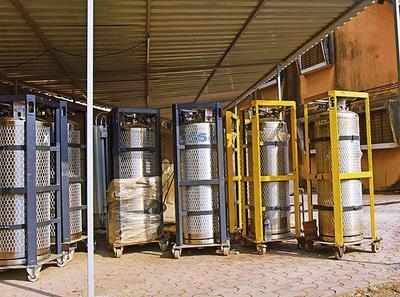The Statistical Secrets of Covid-19 Vaccines | WIRED


wired.com
They’re really very good, and they’re the only way out of the pandemic. But a tour through the numbers could bring the vaccine-hesitant into the tent.
The highly complex structure and function of human T cells made the creation of synthetic versions of the immune cells difficult, but scientists from the University of California – Los Angeles (UCLA) have finally done it. In their new study, researchers discuss the journey of developing nearly perfect copies of human T cells.
T cells, or T lymphocytes, are white blood cells that develop from stem cells in the bone marrow and mature in the thymus. They are activated as part of the adaptive immune response when the body is under attack from some sort of bacterial or viral infection. T cells also work with B cells to fight cancer and produce antibodies specific to incoming pathogens.
T cell receptors allow T cells to recognize foreign particles (antigens). Two main types of T cells, cytotoxic and helper T cells, perform all of the different functions required by the adaptive immune system to respond to a variety of different attacks on the body. Uniquely, T cells can shrink to as much as 25 percent of their normal size to fit between small gaps and pores or grow to three times their normal size to fight pathogenic foes.
"The complex structure of T cells and their multifunctional nature have made it difficult for scientists to replicate them in the lab," explained study leader Dr. Alireza Moshaverinia. "With this breakthrough, we can use synthetic T cells to engineer more efficient drug carriers and understand the behavior of immune cells."
UCLA researchers had to first deal with several obstacles before they could successfully create a true synthetic T cell. T cells are delicate, surviving for only a few days after extraction from humans or animals. T cells also have complex shape, size, and flexibility qualities. Matching these qualities exactly is vital for T cells to function on a basic level during infection.
After overcoming these obstacles, researchers moved on to a series of technologies to produce their synthetic T cells. First, they used a microfluidic system to combine two different fluid solutions that created microparticles of alginate. These microparticles can then be used to duplicate the form and structure of natural human T cells.
To attain the right level of flexibility, researchers made adjustments via changing concentrations of calcium ions in a “calcium ion bath.” They covered T cells with phospholipids to mirror the image of human cellular membranes. Lastly, they used a “bioconjugation” process to link synthetic T cells with their own surface receptors that are required for activation during the adaptive immune response.
"We were able to create a novel class of artificial T cells that are capable of boosting a host's immune system by actively interacting with immune cells through direct contact, activation or releasing inflammatory or regulatory signals," explained UCLA’s Mohammad Mahdi Hasani-Sadrabadi. "We see this study's findings as another tool to attack cancer cells and other carcinogens."
A great part of this process is that researchers predict that it can also be used to create all kinds of artificial immune cells. With synthetic T cells, researchers can develop new drugs to treat cancer, autoimmune disease, and immune deficiency. Plus, scientists can have a unique new way to study the biology of the human immune system.
The present study was published in the journal Advanced Materials.
Sources: PubMed Health, British Society for Immunology, University of California – Los Angeles
